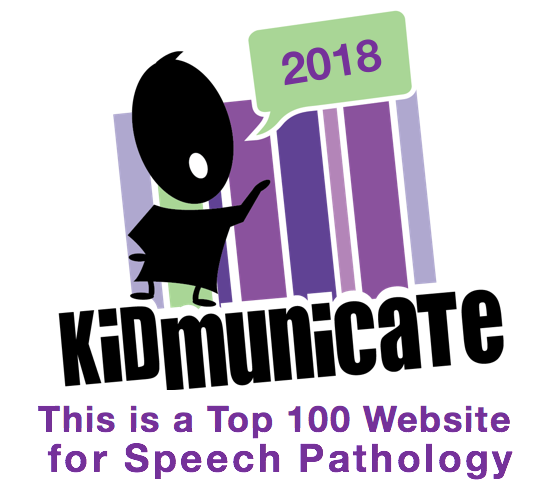Each year I enjoy the Edublog Awards season, which is ostensibly a competition but really a reminder of the importance of social media in education. For more on the history of the Edublog awards,
click here. In the past few years, quite a few of the SLPs participating in social media have represented in this event,
as you can see in last year's ASHAsphere post. I'd encourage SLPs who blog to nominate others; visibility and awareness of the work that SLPs do in education is very valuable. No matter who "wins," the annual event exposes all educators to a new list of passionate teachers.
Here's how you can nominate others, if you are a blogger and are interested.
Here's a link to Chris Bugaj's nomination post- Chris, thanks again for the nod.
So, short(listed), hopefully, and sweet, here are mine:
Best individual blog
Speechie Apps by Aubrey Klingensmith is a great spot for app reviews, and kudos to Aubrey for tackling the task of helping SLPs incorporate Android apps as well as iOS, which I honestly have no desire to do! So glad I can send SLPs to her blog to explore this area.
Best group blog
ASHAsphere, the blog of the American Speech-Language Hearing Association, features thoughtful blog posts from SLPs with a variety of viewpoints, in a variety of settings, working with a variety of populations. It's great food for thought and skillfully compiled, collected and elicited by Maggie McGary, ASHA's social media director.
Best new blog
Hanna B. gradstudentSLP explores a variety of topics close to my heart (executive function, social cognition, and apps) with humor and the wisdom of a...wait, Hanna's a grad student still??
Best ed tech / resource sharing blog
all4mychild shares the creative use of a variety of apps, books (particularly with their
books4all analyses) and other strategies to make therapy engaging and effective.
Best teacher blog
Speech Adventures-Speech Therapy, Technology and Humor by Mary Huston (not a teacher technically, but as an individual SLP in the school setting) has in a short time adventured into many interesting territories, including app commentary, RTI, and even the connection between Cher's
Burlesque and our tendency to get stuck in our own thought patterns. I love me some Cher and flexible thinking.
Most influential blog post
Appdapted: Halloween-Themed Apps by Jeremy Legaspi is a tour de force of creative re-purposing of apps, which you probably know is my favorite topic. With 21 examples of how to consider apps' features as related to speech and language objectives, readers are sure to be able to generalize these ideas past October 31.
Best twitter hashtag
#slpeeps, of course, is my go-to hashtag when I have a question or just want to engage with other professionals.
Best free web tool
Domo Animate is one of my favorite web tools to tell people about. Animation=Language, and it's pretty easy to use.
Best educational use of audio / video / visual / podcast
A.T.TIPSCAST by Chris Bugaj continues to infuse an ever-growing list of high- and low-tech tips with humor and production values, and is geared toward every educator (but we SLPs should arm ourselves with a lot of A.T.TIPS, for sure, in our consultation work). Again, podcasts provide an opportunity for re-claimed drive time. Listen to Chris on your commute through the free
Podcast app.
Best educational wiki
Karen Janowski and Joyce Valenza's
UDL Tech Toolkit is a one-stop shop for tools to help any learner access the curriculum.
Best open PD/unconference/webinar series
I have been to a number of
Edcamps in the past several years, and these free unconferences, crowdsourcing the knowledge of the attendees themselves, still rival any experience I pay $$$ for.
Best educational use of a social network
Monthly
#slpchat events continue to be an excellent reason for SLPs to check out twitter, recently covering such topics as AAC, autism and conference attendance strategies.
Best mobile app
Toontastic, again, cause Animation=Language, and because Launchpad has continued to develop context and allowed school-based SLPs to access them with the All-access Pass.
Always tough to pick. Good luck, guys!
















